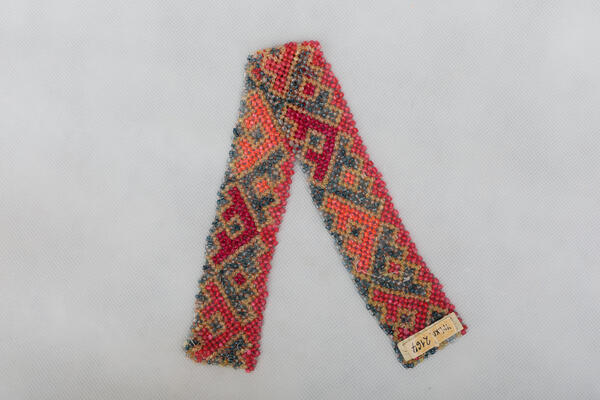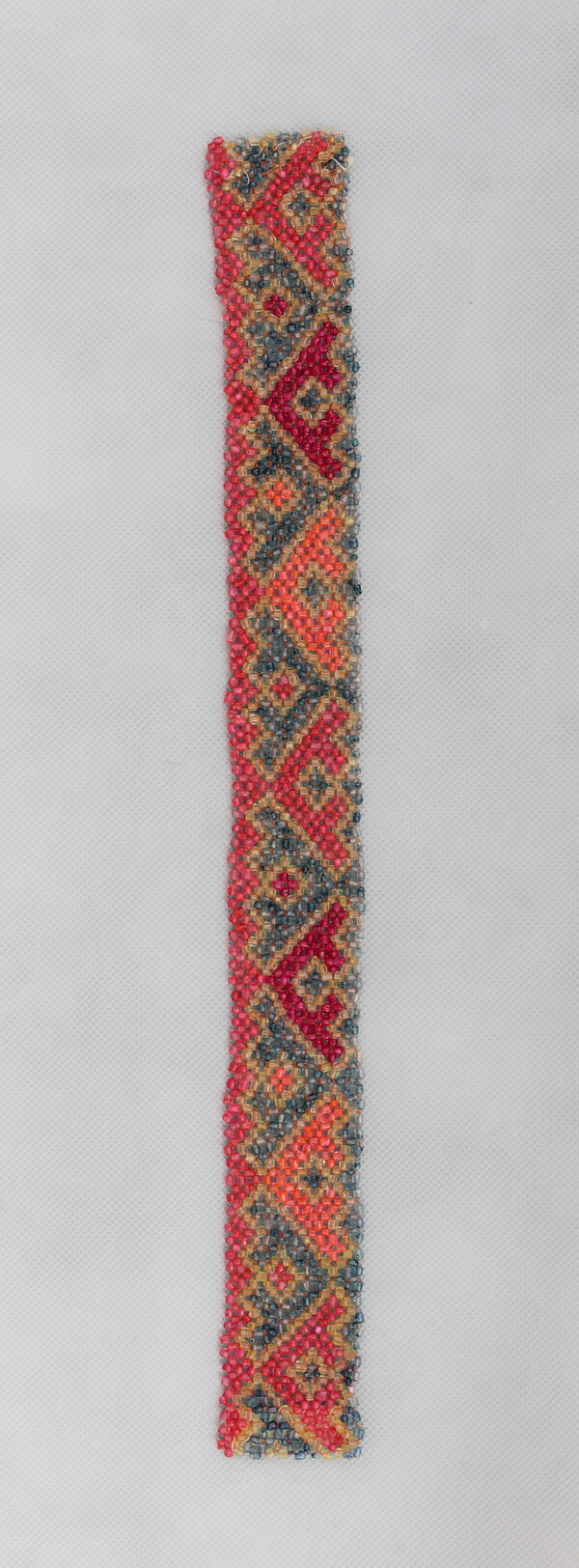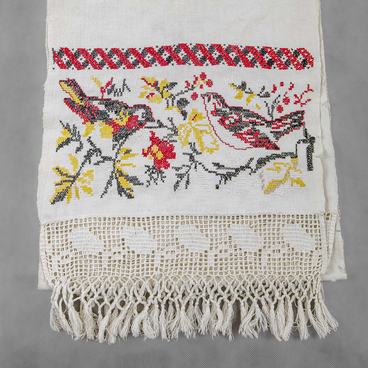Jewelry is an important part of the Khanty and Mansi traditional culture. In terms of the technique, beaded jewelry comes in two forms: embroidered and woven. Artisans used beadwork to decorate clothes, hats, shoes, belts, mittens, and hunting masks. They made braid, chest and forehead decorations.
Usually, the Khanty and Mansi took bands of fabric, embroidered them with beads and sewed them onto clothes. They used various stitching techniques and designs. For example, multi-colored beads could be arranged in a line or pattern. Needlewomen could use a stitch with two or three strung beads or make a cross of five beads.
In the 19th–20th centuries, beads were used to decorate jewelry pieces. Simple beaded strings with crosses were worn as necklaces. At the end of the 20th century, the Khanty and Mansi began to make rings, bracelets, and medallions from beads.
Beadwork, both embroidery and weaving, is one of the most common crafts. They were widely used in the decorative and applied arts of the Ob Ugrians. In the 10th–13th century, this tradition became part of their culture, possibly coming from Central Asia. On the territory of Yugra, beadwork was a universally popular craft of the Khanty and Mansi. At the same time, each local group had their own techniques and a certain set of beaded items.
The pattern called “hare ears” was used to decorate children’s belongings, since according to Khanty mythology, a hare was a forest female spirit associated with fertility. Blue, white, and red were the classic beadwork jewelry colors. Color has always had a deep meaning and was of great importance: white symbolized goodness, luck, and prosperity, red — the sun and warmth, and blue — the sky.
Currently, the most common bead weaving is based on a rhombic cell of four or eight beads. The rosette technique helps to weave in different directions and create rectilinear ribbon and medallion ornaments from beads of different colors.
Usually, the Khanty and Mansi took bands of fabric, embroidered them with beads and sewed them onto clothes. They used various stitching techniques and designs. For example, multi-colored beads could be arranged in a line or pattern. Needlewomen could use a stitch with two or three strung beads or make a cross of five beads.
In the 19th–20th centuries, beads were used to decorate jewelry pieces. Simple beaded strings with crosses were worn as necklaces. At the end of the 20th century, the Khanty and Mansi began to make rings, bracelets, and medallions from beads.
Beadwork, both embroidery and weaving, is one of the most common crafts. They were widely used in the decorative and applied arts of the Ob Ugrians. In the 10th–13th century, this tradition became part of their culture, possibly coming from Central Asia. On the territory of Yugra, beadwork was a universally popular craft of the Khanty and Mansi. At the same time, each local group had their own techniques and a certain set of beaded items.
The pattern called “hare ears” was used to decorate children’s belongings, since according to Khanty mythology, a hare was a forest female spirit associated with fertility. Blue, white, and red were the classic beadwork jewelry colors. Color has always had a deep meaning and was of great importance: white symbolized goodness, luck, and prosperity, red — the sun and warmth, and blue — the sky.
Currently, the most common bead weaving is based on a rhombic cell of four or eight beads. The rosette technique helps to weave in different directions and create rectilinear ribbon and medallion ornaments from beads of different colors.





